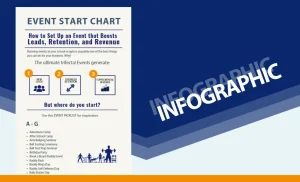Insights & Resources to Help You Grow
Stay ahead with expert tips, client success stories, and industry updates tailored for membership-based businesses.
Most Recent Posts

Year in Review: Platform Improvements & What’s Next for Member Solutions
As we close out the year, we want to take a moment to reflect on the progress we’ve made and

How to Build Stronger Memberships in 2026
A Strategy Guide for Dojos, Studios, and Member-Based Businesses Are you trying to figure out how to build stronger memberships

Interview with the Experts: Featuring Michael Brandt
Behind the Scenes of Member Manager with Product Owner, Michael Brandt If you’ve ever used Member Manager, you’ve already interacted
Event Registration

9 Fall Events & Activities to Boost Enrollment & Retention in Your Martial Arts School
Are you looking for ways to build connection in your martial arts school? To bring new students through your door?

Event Start Chart: How to Set Up an Event that Boosts Leads, Retention, and Revenue [Infographic]
Are you looking for ways to fill your classrooms with new, eager-to-learn white belts? To re-ignite engagement with your current

[Webinar] Special Event Ideas to Ignite Member Engagement
You’ve heard it before: The more engaged members are, the more loyal they become. The more loyal members are, the
Managed Billing

9 Fall Events & Activities to Boost Enrollment & Retention in Your Martial Arts School
Are you looking for ways to build connection in your martial arts school? To bring

Event Start Chart: How to Set Up an Event that Boosts Leads, Retention, and Revenue [Infographic]
Are you looking for ways to fill your classrooms with new, eager-to-learn white belts? To

[Webinar] Special Event Ideas to Ignite Member Engagement
You’ve heard it before: The more engaged members are, the more loyal they become. The
Membership Software

How to Build Stronger Memberships in 2026
A Strategy Guide for Dojos, Studios, and Member-Based Businesses Are you trying to figure out

Interview with the Experts: Featuring Michael Brandt
Behind the Scenes of Member Manager with Product Owner, Michael Brandt If you’ve ever used

2026 Membership-Based Industry Trends You Should Know
The membership-based business industry isn’t slowing down (and neither are the opportunities!). The 2026 Fitness Industry Report by

Year in Review: Platform Improvements & What’s Next for Member Solutions
As we close out the year, we want to take a moment to reflect

Interview with the Experts: Featuring Michael Brandt
Behind the Scenes of Member Manager with Product Owner, Michael Brandt If you’ve ever

2026 Membership-Based Industry Trends You Should Know
The membership-based business industry isn’t slowing down (and neither are the opportunities!). The 2026 Fitness Industry Report
